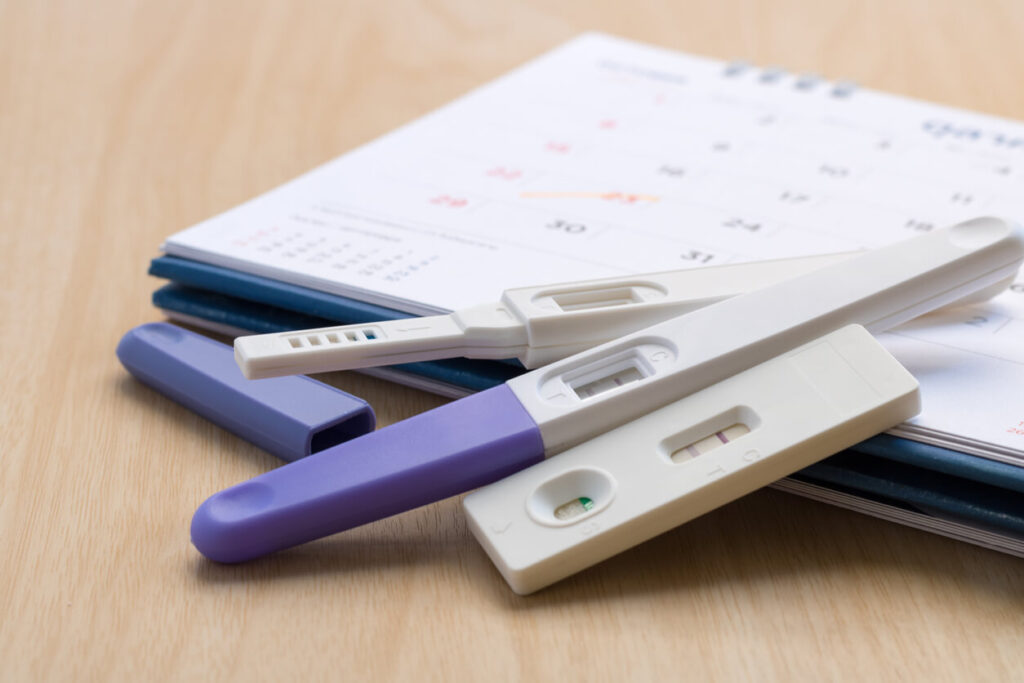If you have to undergo in vitro fertilization (IVF), you want nothing more than for it to be successful. There are so many moving parts, medications, hopes, concerns, and even fears. There’s a saying, “take it one step at a time” and in this article, we hope to take you through the IVF implantation timeline one step at a time to help educate you, empower you and prepare you for what lies ahead. We even hope you can use some of this information to speak to your doctor about potentially taking extra steps in increasing your chances of a successful outcome!
What is IVF?
The National Infertility Association defines IVF as, “a technique where a woman’s eggs and man’s sperm are combined in a special laboratory in order to create an embryo or embryos. Depending on the diagnosis and age of the woman, an embryo or embryos are transferred to the woman’s uterus through her cervix to enhance the chances of pregnancy.” Depending on your IVF protocol, the IVF implantation timeline can range anywhere from 4 to 6 weeks for one in vitro cycle. Since it was first introduced in 1978, IVF has helped conceive approximately 8 million babies around the world.
IVF Implantation Timeline: The Basics
While every cycle is different, and every IVF implantation timeline can vary, below is a basic overview of what an IVF cycle entails:
- Fertility Consultation. Before you begin any fertility treatment, you will meet with a reproductive endocrinologist who will review your medical history, any previous treatment you’ve done (including any previous IVF cycles) and any diagnosis for you or your partner have that could impact your fertility. Depending on which clinic you go to and what is included in the consultation, some initial consultations are just a conversation while some include blood work and an ultrasound.
- IVF Preparation. This will include blood work, fertility testing (both male and female), an ultrasound, infectious testing and in some cases, regulating the woman’s menstrual cycle. Your doctor will review your health and fertility history as well as your test results and put together a personalized fertility treatment plan or IVF protocol for you.
- Fertility Medication and Monitoring. Most IVF cycles are done with injectable hormones that stimulate follicular growth, as each follicle that grows on a woman’s ovary contains an egg. The goal is to produce multiple eggs in a single cycle so that they may be retrieved and fertilized to create multiple embryos. You will be monitored during stimulation as you progress through the IVF implantation timeline. Your doctor will perform regular ultrasounds and blood work to evaluate your follicle and egg development and hormone levels. This part of the timeline is the most time consuming as it involves regular doctor visits.
- The Trigger Shot, Egg Retrieval, and Fertilization. Based on your monitoring appointments, once your doctor feels your follicles have grown to a certain size indicating that the eggs are mature enough to be fertilized, he or she will advise you to take the trigger shot. They will then schedule the egg retrieval for 36 hours later. The eggs will be retrieved under light sedation and the eggs and sperm will be combined in a lab.
PGT-M and PGT-A
Also, if you and your doctor have spoken about whether Pre-implantation Genetic Testing for Monogenic Diseases (PGT-M), formerly known as PGD, and/or Pre-implantation Genetic Testing for Aneuploidy (PGT-A), formerly known as PGS, each embryo will be biopsied and a small sample from each embryo will be utilized for the genetic testing. These tests may be recommended based on your particular situation. Embryos that are tested with PGT-A and found to be chromosomally normal have a higher implantation rate and a lower chance of miscarriage, which can help improve the outcome of your IVF.
What is Implantation?
Implantation is when an embryo successfully attaches itself into the uterus, which is also known as the endometrium lining. “A window of implantation” is the span of time in which your endometrial lining is at its most optimal state to receive an embryo for implantation. An embryo needs to implant to grow and develop, which is necessary for you to sustain a successful pregnancy. According to Dr. Carlos Simon, finding the window of implantation can also be a helpful tool to improve IVF outcomes.
There is a test called Endometrial Receptivity Analysis (ERA) that can determine your personalized window of implantation. The ERA test requires an endometrial biopsy which is performed in a mock embryo transfer cycle. This sample is analyzed to determine your specific window of implantation. That way, your doctor would know the ideal time to transfer the embryo to give it the best chance of implanting in the uterus, thus giving you the best chances of achieving a pregnancy.
Your IVF Implantation Timeline: Taking it One Step at a Time
As you can see, the timeline ahead can range from a month or two to sometimes longer, but you will have a medical team, reproductive technology, and Igenomix resources to support as you throughout your IVF cycle, one step at a time.





Im happy I found this blog, I couldnt find out any info on this subject matter prior to. I also run a site and if you want to ever serious in a little bit of guest writing for me if possible feel free to let me know, im always look for people to check out my site. Please stop by and leave a comment sometime!
I had this content saved a while ago but my notebook crashed. I have since gotten a new one and it took me a while to come across this! I also really like the design though.